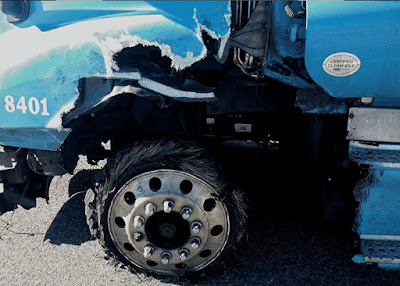Tips If You Have a Blowout on a Tire
When a tire blows out, a person expects to hear three main noises that differ depending on his or her situation. The first noise might be a thunderous boom or bang of the tire exploding resonating through his or her car or truck. The second might be a swishing noise or the noise of the air rapidly leaking from the tire. The third and final noise might be a recurrent flapping or flopping of the flattened tire striking the road. In any of these cases, there is a higher chance of being involved in a car accident, so try to get the problem resolved right away. If you where involved in a car or truck accident due to a flat tire and where injured in the process, you could use the help of a personal injury lawyer.
When a tire explodes at speed, the individual first will feel the vehicle decelerate, then it will jerk sharply to the left or right depending on which tire exploded. If it was the front tire, the person will feel the force mainly within the steering of his or her vehicle. If it was the rear tire, the individual will feel it more in the car’s seat or body. Whichever area the blowout happened, the person’s response ought to be similar in either situation.
Driving Through a Tire Blowout
The National Safety Council and other safety specialists state that there are a few significant tips and best practices for an individual to remember if he or she experiences a tire blowout. The person must do as follows:
· Keep a secure grip on the steering wheel.
· Do not slam on the brakes.
· Allow his or her car to decelerate slowly.
· Drive to the side of the road when he or she has decelerated to a safe speed.
· Turn on his or her emergency flashing lights.
The Aftermath
After a blowout, a person must only leave his or her vehicle if he or she is sure that he or she is safely off the road and in a safe place. The individual must activate his or her emergency flashing lights to warn other drivers and put out reflective cones or triangles if he or she has them. If the person finds it unsafe to replace the tire where he or she is or uncertain how to do it, he or she must request roadside help.
The individual must also remember that a spare tire is only suggested for emergencies and ought not be drive for long distances or at elevated speed. The person must take the time to read his or her owner’s manual to learn where his or her spare tire and required tools are. The individual’s manual might also give instructions on how to replace a flat tire. It is a good idea for the person to familiarize him or herself with these procedures prior to him or her getting stuck on the roadside.
Preventing a Tire Blowout
Thankfully, most tire blowouts are avoidable with the appropriate effort and attention. Many happen between May and October when the surface of the road is the hottest, arising from an underinflated tire, extremely worn treads, or an overloaded vehicle. It is important for an individual to perform an easy, standard inspection of his or her tires to look for gradual leaks, wear and tear, and appropriate pressure. It would be also helpful for the person to keep his or her load light within his or her vehicle manufacturer’s suggestions.



Comments
Post a Comment